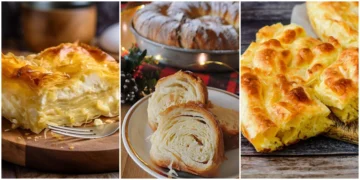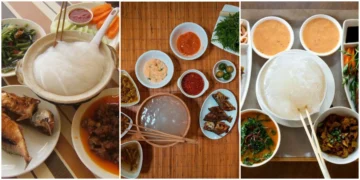China’s culinary legacy is as rich and varied as its long history, and among all of its celebrated dishes, Peking Duck stands as a mark of honor. Considered an icon, Peking Duck is the best food of China. It is revered not only for its delectable meat and crisp skin but also for the artistry and tradition inherent in its preparation. More than just an accompaniment, Peking Duck stands as a cultural icon and serves as a testament to centuries of culinary innovation and refinement in Beijing.
Why Peking Duck Is the Ultimate Delicacy?

Peking Duck has long been celebrated for its exquisite combination of textures and flavors that makes for a multisensory dining experience. It is known for its crisp lacquered skin juxtaposed with tender, flavorful meat that is aromatic yet subtly sweet, as well as for the meticulous preparation process that ensures every element – from marination to roasting- is executed precisely.
Peking Duck in China is more than a delicious meal; it is a celebration. Often enjoyed at formal family or cultural gatherings, Peking Duck brings people together to recognize a shared heritage. Diners delight in watching as it is expertly carved tableside to showcase its crispy skin, succulent meat, and myriad accompaniments that they celebrate together with pride! This performance art shows just how proud Chinese people are of their culinary traditions!
Ingredients of Peking Duck
Peking Duck’s success lies in its meticulous selection and combination of ingredients: quality and harmony are its cornerstones.
- Duck: At the core of this dish lies an exquisite duck breed bred for tender meat and crisp skin, raised under conditions that ensure both lean and fat meat production.
- Seasoning: To give the duck its distinctive crispy skin, we combine salt, sugar, and maltose in an intricate blend for optimal seasoning. These ingredients help draw out moisture to create that characteristic lacquered exterior that we all know so well.
- Aromatic Herbs: Traditional recipes often incorporate subtle notes of star anise, ginger, and other aromatic spices in the marinade to add depth of flavor without overshadowing its original taste.
- Glazes and Sauces: To complete this dish, the finishing touches consist of adding a glaze–usually made from maltose syrup–to give the skin its glossy sheen, as well as various dipping sauces such as hoisin sauce for sweet-tart contrast to complement the rich flavors of duck.
- Pancakes and Garnishes: Thin, steamed pancakes served with cucumber slices, scallions, or pickled vegetables are the traditional accompaniments. This allows diners to build personalized wraps that highlight all of its textures and flavors.
Prepare Pepping Duck (Best Food of China)

- Seasoning and Marinating: A duck should be carefully seasoned on both its insides and exteriors for optimal results. A combination of salt and sugar is applied to help cure its meat, while some traditional methods use aromatic herbs as marinating agents. Once prepared, it should be placed in a cool and ventilated space to dry for up to 24 hours after seasoning so its skin hardens into an exquisite crispness.
- Glazing: Before roasting, duck is typically coated in a thin coat of maltose syrup or another similar glaze to give its skin an appealing sheen while also caramelizing during roasting, improving flavor and texture.
- Roasting: Duck is usually prepared in an oven–often wood-fired–that maintains an even, high temperature. Once suspended in the oven, hot air circulates all around it to ensure even cooking and ensure uniform results. Roasting takes around 60-90 minutes. During this process, the skin becomes deep golden-brown in color while its meat remains tender and juicy.
- Carving and Serving: Once roasted to perfection, the duck is brought directly to the dining table. Meat is separated from the skin to highlight its delicious crispiness. Combine it with steamed pancakes, fresh cucumber slices, scallions, and hoisin sauce.
- Peking Duck is an outstanding dish, due to its meticulous process that blends culinary expertise with precise preparation.
What Makes Peking Duck Unique?
Peking Duck stands out not only due to its intricate preparation process but also as an ambassador of culture. Its iconic crispy skin and tender meat have evolved through centuries of innovation. There is a good evolution from imperial court recipes into modern culinary icon status. Peking Duck requires precise moisture removal, seasoning, and roasting techniques to achieve both visual beauty and irresistibly delicious results.
Peking Duck’s traditional presentation in thin pancakes with an assortment of fresh garnishes allows diners to experience this dish interactively. Diners become part of an event when wrapping the duck in pancakes becomes part of an all-out communal dining. It honors Chinese culinary heritage and community dining practices.
History of Peeking Duck (Best Food of China)

Peking Duck can trace its roots back more than 600 years to the Yuan and Ming dynasties in China. The royalty first enjoyed it as part of their diet. Over time, however, its preparation was refined further. Eventually, it became a delicacy enjoyed by all in Beijing (formerly Peking). Its development exemplifies cultural exchange and culinary innovation found throughout Chinese history. During imperial times elaborate techniques were employed to ensure only premium specimens made it to imperial tables. Over time these techniques spread among wider populations until Peking Duck became an emblematic representation of Beijing’s gastronomic pride!
Other Delicacies of China
- Dim Sum: An assortment of small yet flavorful dishes such as dumplings, buns, and rolls served at Cantonese tea houses.
- Sichuan Hot Pot: Sichuan dish allows diners to prepare an array of meats, vegetables, and tofu.
- Kung Pao Chicken: A stir-fry dish featuring tender chicken, peanuts, vegetables, and chili peppers in a sweet-and-savory sauce. The sauce is made of peanuts, vegetables, and chili peppers.
- Mapo Tofu: An iconic Sichuan cuisine dish that pairs soft tofu with an intoxicating fermented bean paste sauce.
- Xiaolongbao: Delicate soup dumplings with delicate dough filled with rich broth and minced pork.










Discussion about this post